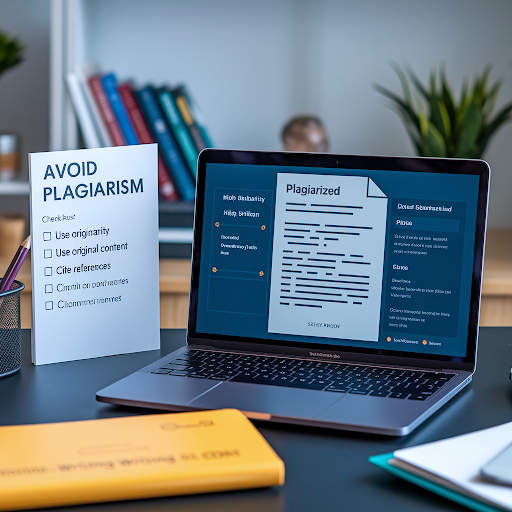How to Prepare a Winning CDR for Engineers Australia: A Complete Guide
Are you planning to migrate to Australia as an engineer? One of the most critical steps in your journey is preparing a Competency Demonstration Report (CDR) for Engineers Australia (EA). A well-crafted CDR can open doors to exciting career opportunities in Australia’s engineering sector.
This comprehensive guide will walk you through the process of creating a successful CDR that adheres to Engineers Australia’s strict guidelines while ensuring it showcases your unique skills and achievements.

What Is a CDR and Why Is It Important?
The Competency Demonstration Report (CDR) is a detailed document that demonstrates your engineering knowledge, skills, and experience to Engineers Australia. It serves as a proof of your competency in your nominated occupation and determines your eligibility for migration under the skilled migration pathway.
Failing to meet Engineers Australia’s requirements can result in rejection, so it’s vital to get your CDR right the first time.
Key Components of a CDR
A CDR consists of three main components:
1.Continuing Professional Development (CPD)
Your CPD should highlight the ongoing training and skills development activities you’ve undertaken to stay current in your engineering field. Include:
- Workshops and training programs
- Conferences or seminars attended
- Online courses or certifications
- Relevant technical publications you’ve read or contributed to
2.Three Career Episodes
These are detailed narratives showcasing specific engineering projects or tasks you’ve undertaken. Each career episode must:
- Be written in the first person
- Focus on your personal contributions and responsibilities
- Address specific competency elements from Engineers Australia’s guidelines
3.Summary Statement
This is a table linking the competency elements outlined in the career episodes to Engineers Australia’s required competencies. It ties everything together and provides a concise summary of how you meet the standards.
Step-by-Step Guide to Preparing Your CDR
1. Choose the Right Occupation
Your first step is selecting the engineering occupation that aligns with your qualifications and experience. Engineers Australia uses the ANZSCO code system to classify occupations, so ensure your choice matches your expertise.
2. Understand the Guidelines
Download and thoroughly review the latest Migration Skills Assessment (MSA) Booklet from Engineers Australia. It contains detailed instructions on formatting, content, and submission requirements. Deviating from these guidelines can lead to rejection.
3. Craft Your CPD
Keep your CPD simple, concise, and focused. Use bullet points to list your professional development activities, along with dates, locations, and a brief description of each activity.
4. Write Compelling Career Episodes
Each career episode should focus on a specific project or task that demonstrates your competencies. Follow these tips:
- Focus on Personal Contributions: Highlight what you did, not what the team achieved.
- Use Active Language: Write in the first person and use active verbs (e.g., designed, implemented, resolved).
- Follow the STAR Method: Structure your narratives using the Situation, Task, Action, and Result framework for clarity and impact.
5. Create a Detailed Summary Statement
This is a critical section that links your career episodes to the competency standards. Use clear references and demonstrate how each competency element has been addressed.
6. Check for Plagiarism
Engineers Australia takes plagiarism very seriously. Using pre-written samples, templates, or outsourced content can result in your CDR being flagged as non-compliant. Always write your CDR in your own words.
7. Proofread and Edit
Errors in grammar, formatting, or structure can diminish the professionalism of your CDR. Use tools like Grammarly or hire a professional editor to review your document before submission.
8. Submit Your CDR
Once your CDR is complete, submit it through Engineers Australia’s online portal. Ensure all accompanying documents, such as certified transcripts and English language test results, are uploaded correctly.
Common Mistakes to Avoid
1.Overlooking Engineers Australia's Guidelines
Ignoring the MSA Booklet can lead to errors in structure and content, jeopardizing your application.
2.Focusing on Team Achievements
Your CDR should focus on your individual contributions, not what your team accomplished.
3.Submitting a Generic CDR
Tailor your CDR to your nominated occupation and include specific, real-world examples.
4.Neglecting Plagiarism Checks
Plagiarism can lead to severe consequences, including application rejection and visa refusal.
Why Plagiarism Is a Critical Issue
When preparing your CDR, it’s vital to avoid copying content from sample reports or outsourcing the writing to unverified sources. Engineers Australia uses advanced plagiarism detection software to ensure the authenticity of submissions. Any copied content, even if paraphrased, can result in your application being marked as bogus documentation.

What Happens If Plagiarism Is Detected?
- Your application may be rejected.
- You could face a ban from applying again for a specific period.
- Visa refusal or cancellation can occur, jeopardizing your migration plans.
Tip: If you’re unsure about your writing skills, seek professional guidance rather than copying content.
How SLEEK MIGRATION Can Help
At SLEEK MIGRATION, we specialize in providing tailored guidance for CDR preparation. From selecting the right projects to structuring your narratives, our experts ensure your submission meets Engineers Australia’s requirements while maintaining authenticity and professionalism.
Contact us today to get started on your CDR preparation and achieve your migration goals with confidence!
FAQs
What is the word count for a CDR?
Each career episode should be around 1,000–2,500 words, while the CPD and summary statement should be concise.
Can I use technical jargon in my CDR?
Yes, but ensure it’s relevant and explained where necessary. Avoid overcomplicating your language.
Do I need to provide evidence for my projects?
Yes, include supporting documents such as diagrams, project plans, and calculations where applicable.
Can I outsource my CDR writing?
No. Outsourcing is considered unethical and may lead to your application being flagged for plagiarism.